The Motherland Calls Uncover the Secrets of Russia.
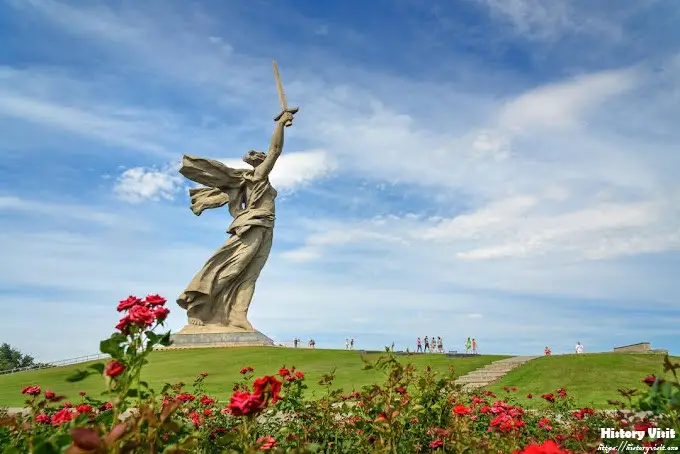
Introduction of The Motherland Calls
Have you ever heard of “The Motherland Calls”? It’s a gigantic statue in Russia. This statue stands tall, symbolizing the courage and strength of the Russian people. It’s not just any statue; it’s a memorial to honor those who fought in one of the toughest battles in history.
“The Motherland Calls” is a symbol of Russian pride. It represents the spirit of the nation during World War II. The statue is located in Volgograd, formerly known as Stalingrad. This place witnessed one of the bloodiest battles during the war.
In this article, we will explore the history, design, and cultural impact of this magnificent statue. We’ll also see why it remains relevant today. Let’s dive into the story behind “The Motherland Calls.”
I. Historical Background of The Motherland Calls
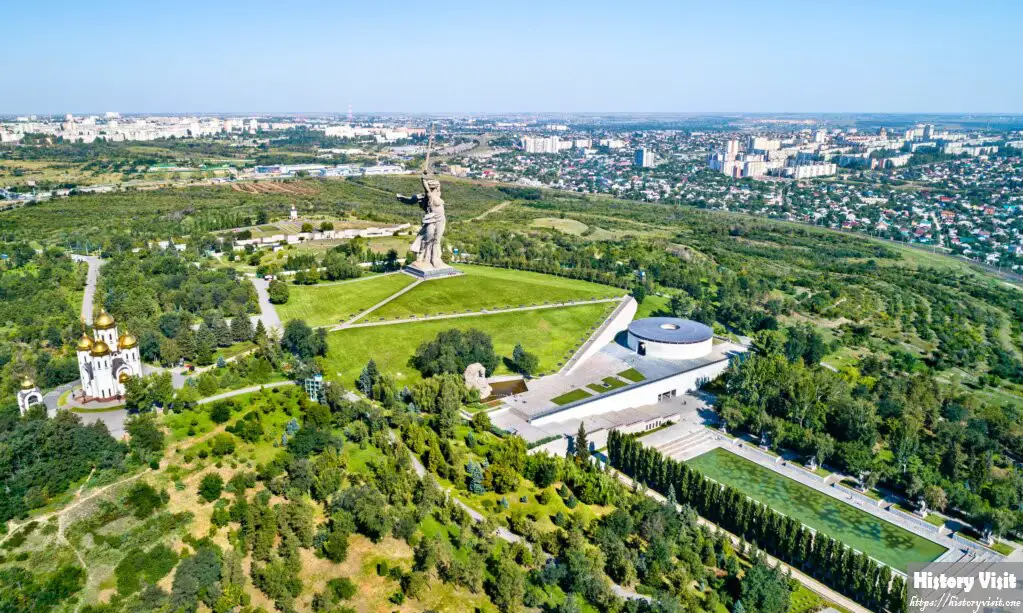
Overview of the Battle of Stalingrad
The Battle of Stalingrad was a major turning point in World War II. It took place between August 1942 and February 1943. The battle was fought between Nazi Germany and the Soviet Union. It is one of the deadliest battles in history, with millions of casualties.
Stalingrad was a vital city for both sides. It was named after the Soviet leader, Joseph Stalin. The city was a major industrial and transportation hub. Both sides wanted control over it. The battle was fierce, with brutal fighting on the ground and constant air raids.
The Soviet Union emerged victorious, but at a great cost. The victory at Stalingrad boosted Soviet morale and marked the beginning of the pushback against Nazi forces. It was a turning point that eventually led to the defeat of Nazi Germany.
Decision to Commemorate the Battle
After the war, the Soviet government decided to build a monument to honor the heroes of Stalingrad. The idea was to create something grand and inspiring. The monument would symbolize the bravery and sacrifice of those who fought in the battle.
The decision to build the statue was widely supported. The government wanted to create a symbol that would remind future generations of the courage shown during the war. The monument was also meant to be a warning against the horrors of war.
The plan for “The Motherland Calls” was ambitious. It was not just a statue; it was a statement. It aimed to capture the spirit of the people and their unbreakable will to defend their motherland.
II. Design and Construction of The Motherland Calls
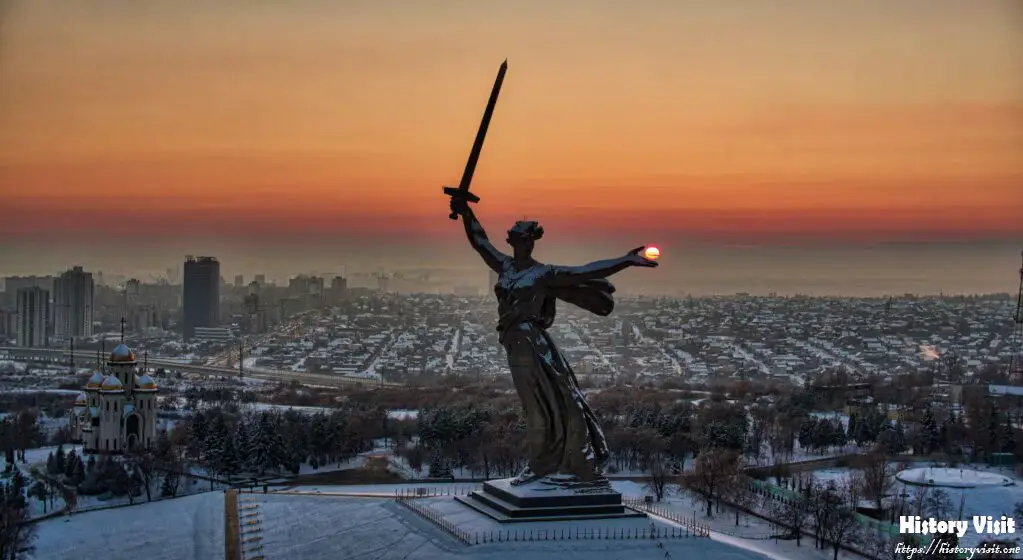
The Vision of the Sculptor Yevgeny Vuchetich
The artist behind “The Motherland Calls” was Yevgeny Vuchetich. He was a renowned Soviet sculptor known for his grand and powerful works. Vuchetich envisioned the statue as a symbol of strength and defiance. He wanted to capture the essence of the Russian spirit.
The statue depicts a woman holding a sword high in one hand while her other hand reaches forward. She appears to be calling out to her people, urging them to defend their land. The expression on her face is fierce and determined, symbolizing the resolve of the Russian people.
Vuchetich’s vision was bold and ambitious. He wanted to create something that would leave a lasting impression. His design aimed to inspire and evoke strong emotions. The statue was meant to be a beacon of hope and a reminder of the sacrifices made during the war.
Architectural and Engineering Challenges
Building “The Motherland Calls” was no easy task. The statue stands 85 meters tall, making it one of the tallest statues in the world. Its sheer size posed significant architectural and engineering challenges. The construction team had to ensure that the statue was not only grand but also stable and durable.
The statue’s construction required advanced techniques and materials. It was made from concrete and steel, designed to withstand the test of time. The internal structure includes a complex framework of metal beams to support the statue’s weight.
One of the biggest challenges was creating the statue’s dynamic pose. The forward-leaning position and outstretched arms required precise calculations to ensure stability. The engineers had to balance the statue’s weight and distribute it evenly to prevent any risk of collapse.
Construction Timeline and Major Milestones
The construction of “The Motherland Calls” began in 1959 and took several years to complete. The project was meticulously planned, with each stage carefully executed. The foundation was laid first, followed by the construction of the statue’s internal framework.
One of the major milestones was the assembly of the statue’s massive sword. The sword alone measures 33 meters in length and weighs several tons. It was a significant achievement that showcased the skill and dedication of the construction team.
The statue was finally completed and unveiled to the public on October 15, 1967. The unveiling ceremony was a grand event attended by government officials, war veterans, and citizens. The statue stood as a proud symbol of the nation’s resilience and determination.
III. Symbolism and Meaning
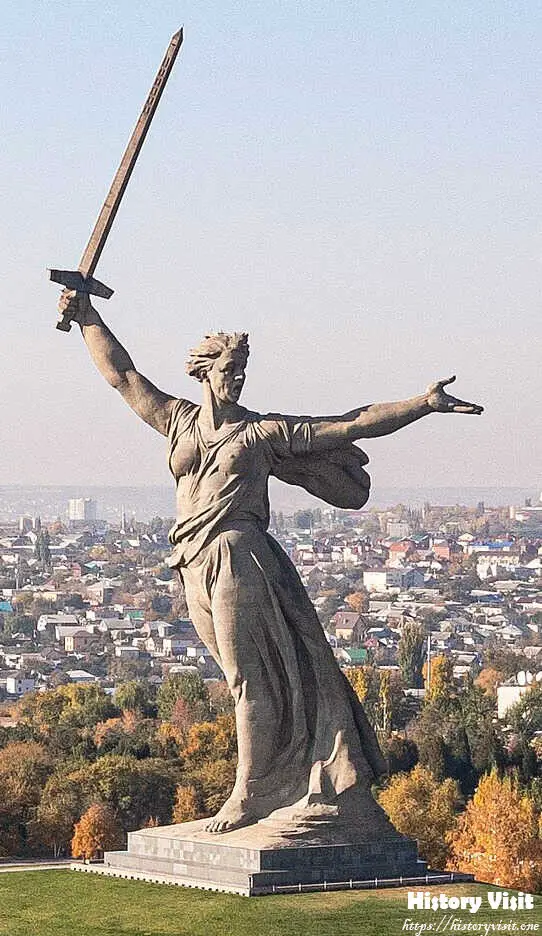
Symbolism of the Statue’s Pose and Features
“The Motherland Calls” is rich in symbolism. The statue’s pose and features convey powerful messages. The forward-leaning position represents a call to action. The woman appears to be urging her people to rise and defend their homeland. This pose symbolizes courage and determination.
The sword held high in the woman’s hand represents strength and readiness to fight. It is a symbol of the struggle and the willingness to protect what is dear. The outstretched arm and open hand suggest a call for unity and solidarity among the people.
The woman’s expression is fierce and resolute. It reflects the spirit of defiance and resilience. Her face shows the determination to overcome any obstacle and emerge victorious. This powerful expression captures the essence of the Russian people’s resolve during the war.
Representation of Russian Resilience and Sacrifice
“The Motherland Calls” is a tribute to the resilience and sacrifice of the Russian people. The statue honors those who fought and gave their lives in the Battle of Stalingrad. It serves as a reminder of the immense hardships endured and the unwavering spirit of the nation.
The statue stands as a testament to the courage of the soldiers who defended Stalingrad. It also honors the civilians who suffered and contributed to the war effort. The statue’s grand scale reflects the magnitude of their sacrifice and the importance of their contributions.
The monument also represents the collective strength of the Russian people. It symbolizes their ability to unite and stand strong in the face of adversity. “The Motherland Calls” is a powerful reminder of the nation’s ability to overcome even the most daunting challenges.
Comparison to Other War Memorials
“The Motherland Calls” is often compared to other war memorials around the world. Its grandeur and symbolism set it apart from many others. While some memorials focus on mourning and remembrance, “The Motherland Calls” emphasizes action and defiance.
Unlike many traditional war memorials, this statue is not just a somber tribute. It is a call to arms, a rallying cry for future generations. Its dynamic pose and powerful expression inspire a sense of pride and determination.
Other famous war memorials, such as the Lincoln Memorial in the United States or the Cenotaph in London, have different approaches. They often focus on solemn reflection and honor the fallen in a more subdued manner. “The Motherland Calls,” on the other hand, is bold and dramatic, capturing the fighting spirit of the Russian people.
IV. Cultural Impact
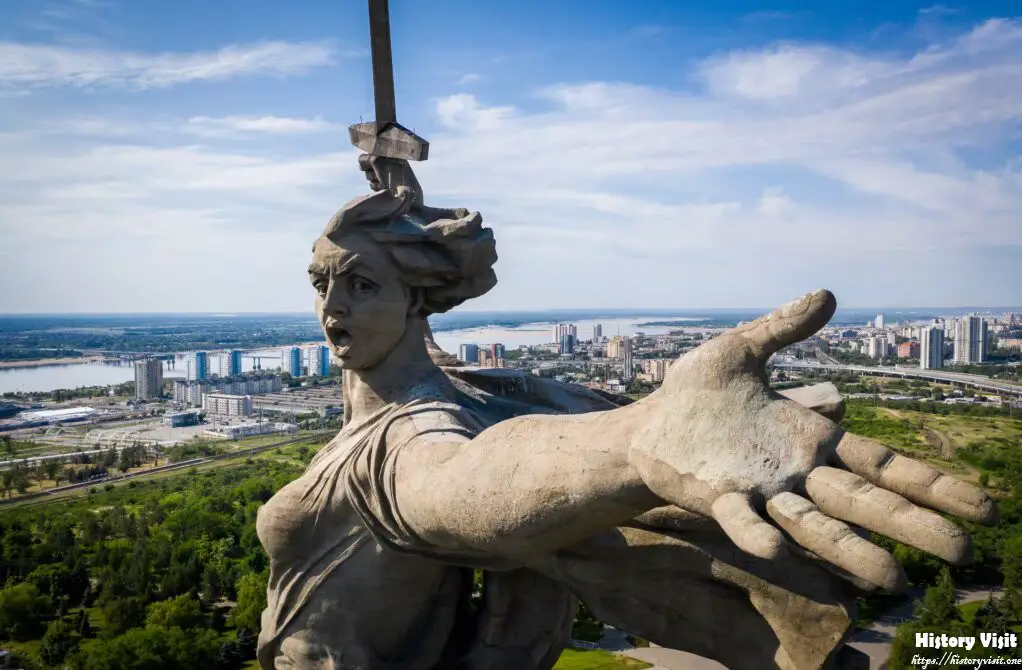
Role of the Statue in Russian National Identity
“The Motherland Calls” plays a significant role in Russian national identity. It is more than just a statue; it is a symbol of pride and patriotism. The statue embodies the spirit of the nation and its historical resilience.
For many Russians, the statue represents their connection to the past. It is a reminder of the sacrifices made by their ancestors. It also serves as a source of inspiration, encouraging them to uphold the values of courage and determination.
The statue is also a unifying symbol. It brings people together to honor their shared history and heritage. “The Motherland Calls” is a powerful reminder of what the nation can achieve when it stands united.
Annual Events and Commemorations at the Site
The site of “The Motherland Calls” is a place of pilgrimage for many Russians. Each year, numerous events and commemorations are held at the statue. These events honor the heroes of the Battle of Stalingrad and celebrate the nation’s resilience.
One of the most significant events is Victory Day, celebrated on May 9th. This day marks the end of World War II in Europe. It is a day of national pride and remembrance. Thousands of people gather at the statue to pay their respects and participate in ceremonies.
Other events include military parades, wreath-laying ceremonies, and cultural performances. These events attract visitors from all over the country and beyond. They serve to keep the memory of the battle alive and honor those who fought and sacrificed.
Influence on Art, Literature, and Media
“The Motherland Calls” has had a profound influence on art, literature, and media. The statue’s powerful imagery has inspired countless works of art. Artists have captured its grandeur in paintings, sculptures, and photographs.
In literature, the statue has been a symbol of strength and resilience. Many authors have referenced it in their works, using it to evoke themes of courage and patriotism. The statue has become a cultural icon, representing the spirit of the Russian people.
In media, “The Motherland Calls” has appeared in films, documentaries, and television programs. Its dramatic pose and powerful symbolism make it a compelling subject. The statue has been featured in stories that explore the history and legacy of the Battle of Stalingrad.
V. Modern Relevance
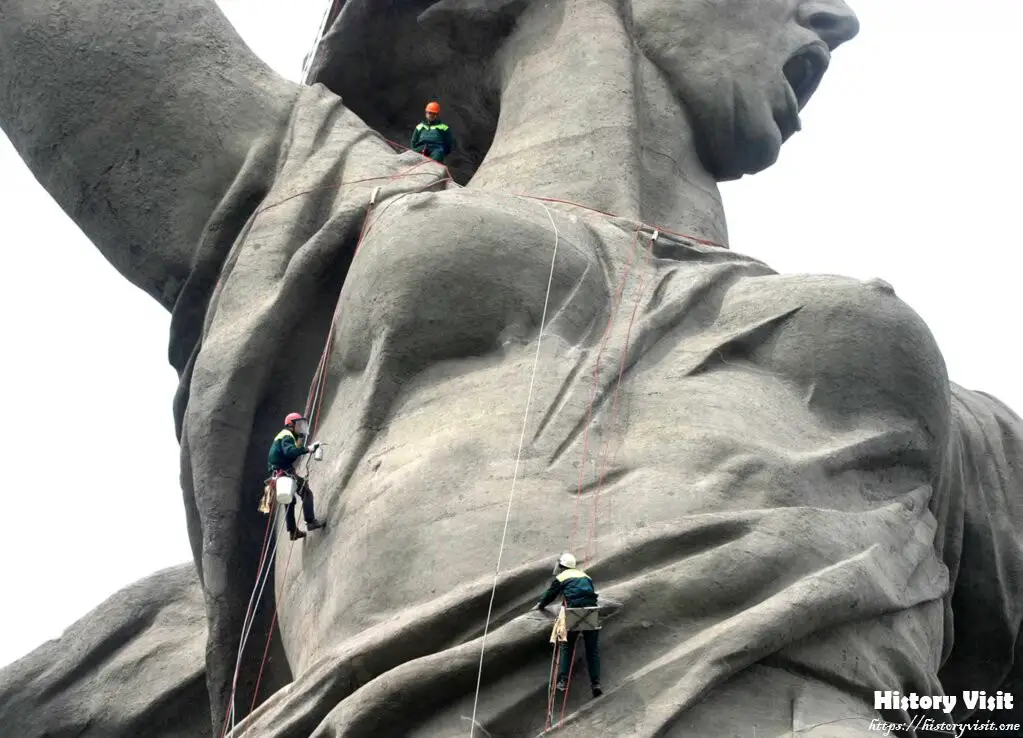
Preservation and Maintenance Efforts
Preserving “The Motherland Calls” is a priority for the Russian government. The statue is a national treasure, and efforts are made to ensure its longevity. Regular maintenance and preservation work are carried out to protect the statue from the elements.
The statue’s size and complexity make maintenance a challenging task. Engineers and preservationists work together to address any issues that arise. This includes repairing any damage and reinforcing the structure to prevent future problems.
The preservation efforts also involve maintaining the surrounding area. The statue is part of a larger memorial complex, which includes a museum and other monuments. Keeping the entire site in good condition is important to honor the memory of those it commemorates.
The Statue’s Role in Contemporary Russian Society
“The Motherland Calls” continues to play a vital role in contemporary Russian society. It remains a symbol of national pride and resilience. The statue serves as a reminder of the nation’s history and the sacrifices made by previous generations.
In modern times, the statue is also a source of inspiration. It encourages people to uphold the values of courage and determination. The statue’s powerful imagery resonates with people of all ages, reminding them of their heritage and the importance of unity.
The statue also serves as a focal point for national celebrations and commemorations. It is a place where people come together to honor their history and celebrate their shared identity. “The Motherland Calls” remains a powerful symbol of the Russian spirit.
Global Recognition and Significance
“The Motherland Calls” is not only significant in Russia but also recognized globally. Its grandeur and symbolism have made it an iconic monument. People from around the world visit the statue to learn about its history and significance.
The statue has been featured in international publications and media. Its powerful imagery and historical importance have captured the attention of people worldwide. The statue is seen as a symbol of the universal themes of courage, sacrifice, and resilience.
“The Motherland Calls” stands as a testament to the strength of the human spirit. It reminds us of the importance of remembering our history and honoring those who came before us. The statue’s global recognition highlights its enduring significance and impact.
Conclusion
“The Motherland Calls” is more than just a statue. It is a symbol of strength, courage, and resilience. The statue commemorates the heroes of the Battle of Stalingrad and honors the sacrifices made during one of the most significant battles in history.
This magnificent statue stands as a reminder of the spirit of the Russian people. Its powerful imagery and grand scale capture the essence of their determination and resolve. “The Motherland Calls” inspires pride and patriotism, encouraging people to remember their heritage.
As we look to the future, “The Motherland Calls” remains a vital part of Russian culture and history. It serves as a beacon of hope and a reminder of the nation’s ability to overcome adversity. The statue’s enduring legacy will continue to inspire generations to come.



lzgzgp